
 |
Station RisePhotographed in August 2004 |
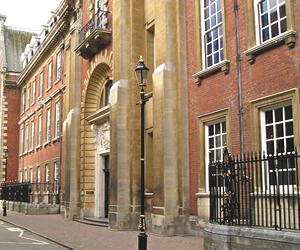 |
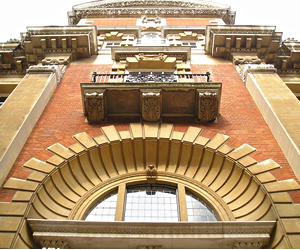 |
|
|
This office building was constructed in 1906, for the North Eastern Railway. David Lloyd, in the Esher Report of 1968 referred to it as 'the only 20th c. building in York which successfully brings off big-city scale.' My father was a British Rail employee throughout his working life, and worked in this ornate red-brick headquarters building. I used to meet him sometimes after leaving school, to get a lift home. The building always struck me as very grand, and indeed it still does. Every evening as he left the building, my father would buy a copy of the Yorkshire Evening Press from the newspaper seller who was stationed in the large foyer. I thought they must be very important and influential people, to have their own newspaper vendor on site. |
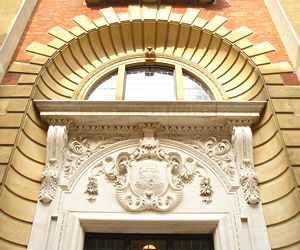
|
|
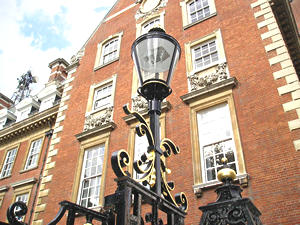 |
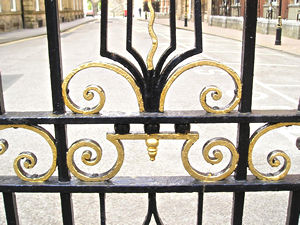 |
|
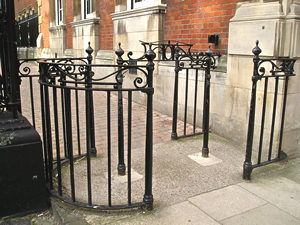 |
The offices are so grand that they're in their own gated close, with these ornate railings and gates at the junction with Tanner Row. These railings are a listed monument too. These sections at each end cleverly make it difficult for anyone on a bicycle to cycle through, as you have to walk around the sides of that central piece. As a child I tended to use the short cut route, ducking my head and going through the middle piece. I have to confess that sometimes, if no one's watching, I still do. |
War memorial |
||
|
The war memorial on Station Rise is best known by local people as the starting point for many coach journeys. It seemed rather ironic, in the 1980s, when the coaches that took us to CND festivals in London picked us up from here. I guess it's more that there are very few places in York where coaches can stop to pick people up without getting in the way. |
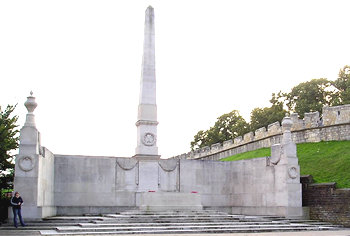 |
|
|
The monument nestles in the shadow of the city walls, but in front of it is a wide area of road where Station Rise turns through an arch in the city walls to the right. On the left is the open area in front of the railway offices pictured above on this page. So the monument stands in a sizeable space. The area is usually full of buses and cars, but occasionally the monument to the fallen can be viewed as I guess it was intended to be, standing at the top of Station Rise, with a wide road in front of it, and framed against the sky. |
||
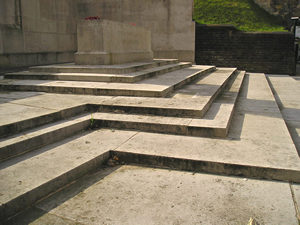 |
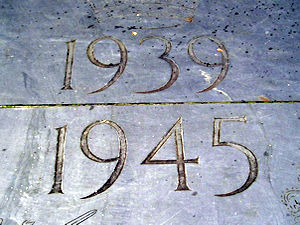 |
|
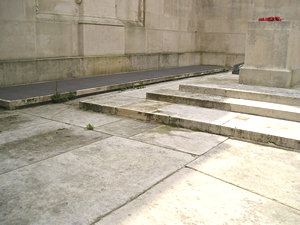 |
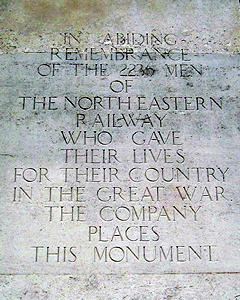 |
|
|
The original monument was designed Edwin Lutyens. A plaque giving further information is attached to the monument – a large image of it can be viewed via this link. This memorial is here by the railway offices because it commemorates, specifically, the men who worked for the North Eastern Railway. The inscription (above right) reads: "In abiding remembrance of the 2236 men of the North Eastern Railway who gave their lives for their country in the Great War the company places this monument." A further 551 names were added after World War II, commemorated by the additional monument placed here in 1984. I'm uncomfortable with anything that glorifies war, as our tabloids so often do. These monuments, however, are dignified and calm. I guess we can all stop and look at them sometimes, and think about the lives behind all those names – rather than just standing by them waiting for our buses – and hope that we'll eventually find ways to end military conflict so we don't have to build any more of them. Related pages: Railway city |
||